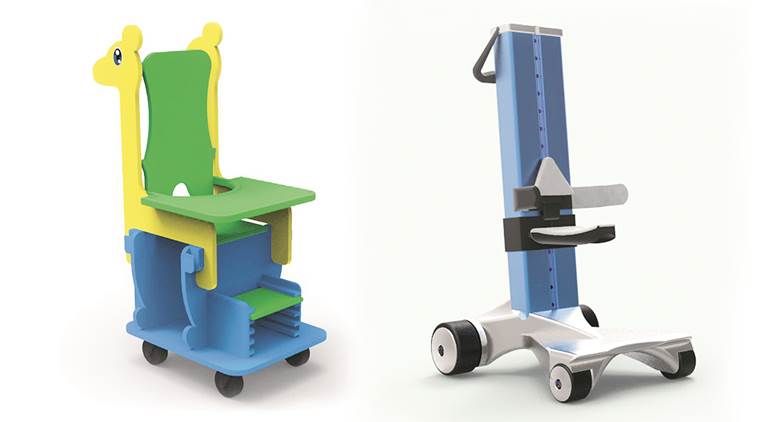Stay updated with the latest - Click here to follow us on Instagram
IIT-B graduate develops low-cost solutions for kids with cerebral palsy
While the current devices cost Rs 10,000 and above, the affordable version is priced at Rs 4,000, and mass production will further bring the costs down.
 The device acts both as a chair and a standing frame.
The device acts both as a chair and a standing frame.
POPULATION-based studies from around the world showed that three out of 1,000 live births in India were impacted by cerebral palsy, according to Trivikram Annamalai, who recently graduated from IIT Bombay’s Industrial Design Centre (IDC). He has designed a product as part of his internship that acts both as a chair and a standing frame for those suffering from the condition, as compared to two separate devices available at present. Cerebral palsy was a group of permanent movement disorders that appeared in early childhood, said experts.
Titled ‘Sahayata’, the project focused on developing low-cost medical devices which can help children strengthen muscles. The USP of the product, according to the institute, was that it had customisation or adjustable features, and hence the product could be adjusted as the child grew. The project was guided by Prof R Sandesh from IDC.
[related-post]
“The project was done as part of an internship during my second year at IDC, at a Bangalore-based NGO called ‘Mobility India’, which is a rehabilitation centre for those who cannot walk. It was an incident that encouraged me to go ahead with this project. A four-year-old girl, who had lost her right leg and both her parents to a road accident, visited the NGO once in six months to get her right leg prosthetic replaced with a new, bigger prosthetic. She refused to go home and when questioned, she replied, ‘when I am at home I feel like I am a handicap, but when I am here, I am one among many other disabled. I feel I am normal’,” said Annamalai.
The solutions provided to those suffering with cerebral palsy is often costly and hence the aim was to develop affordable, low-cost devices.
“This product will benefit users as it combines two features into a single device, implying reduction in the material used to make the products and reduction in the space occupied by the devices in the already small houses in villages or even cities. The most important feature, however, is that the device grows as the child physically grows because the device comes with multiple adjustable features. It includes adjustable foot rest, adjustable hip width and back rest, which enable the user to use the same device over several years, saving further expenses,” he added.
Two variants of the device were developed and tested on users. One variant was the affordable version made of plywood, whereas the second variant was proposed to be made of aluminum. While the current devices cost Rs 10,000 and above, the affordable version is priced at Rs 4,000, and mass production will further bring the costs down.
“The low-cost variant of the device is at present being sold in the market and is preferred by patients over existing devices as the aesthetics of the device is more inviting to children,” said Annamalai.
mihika.basu@expressindia.com







